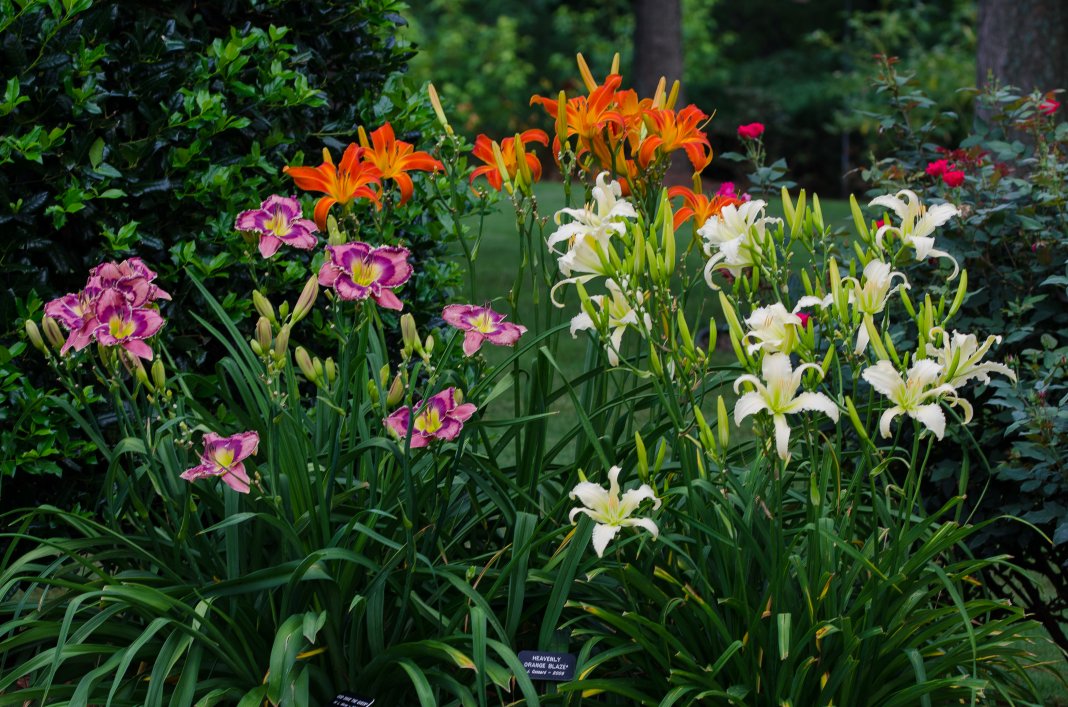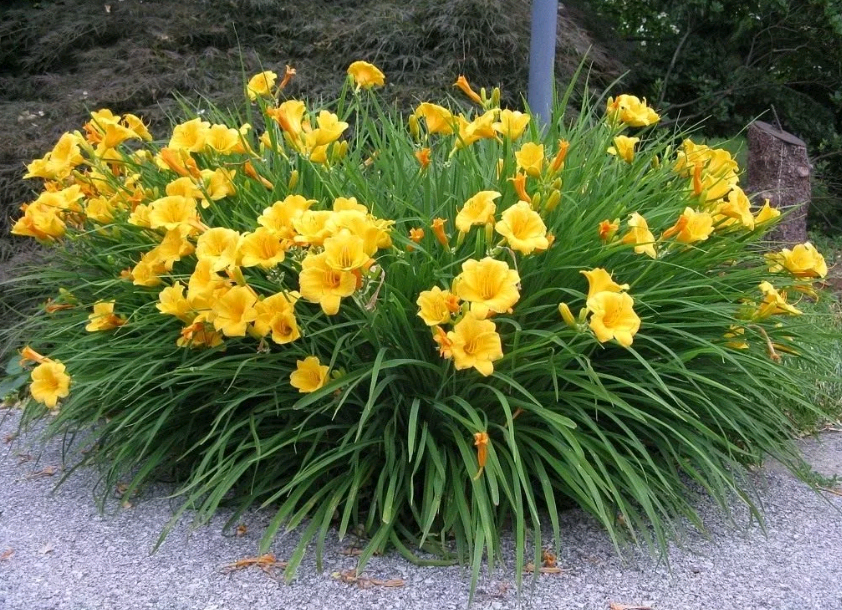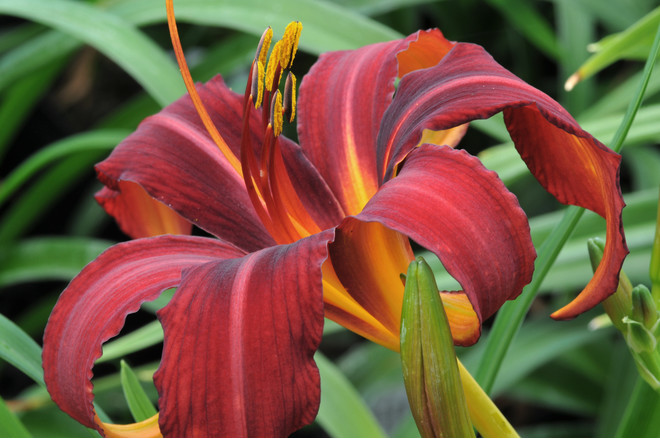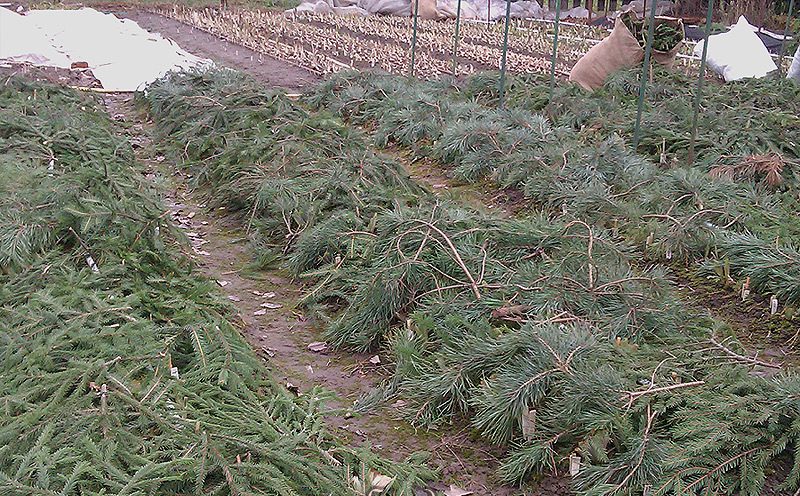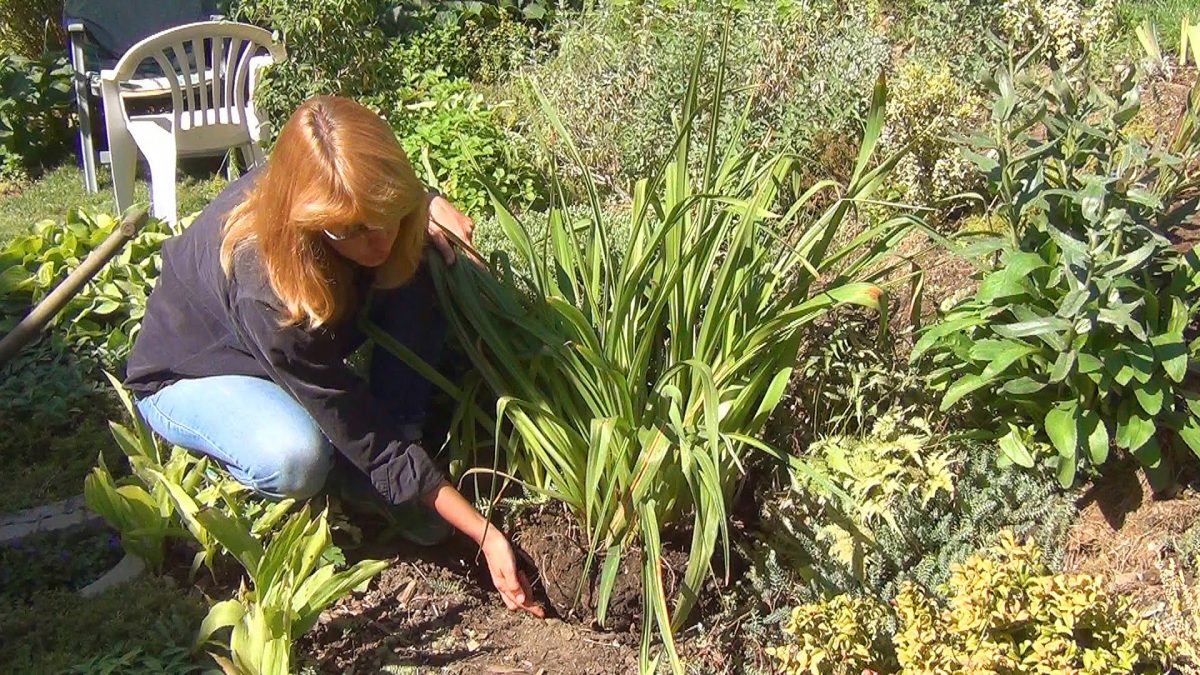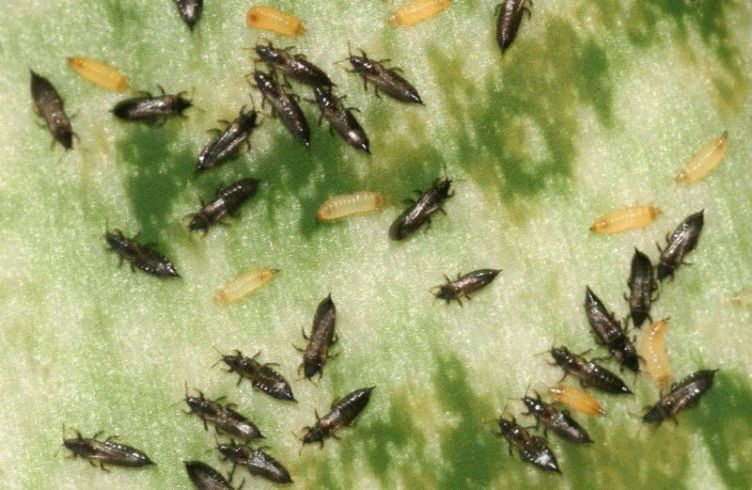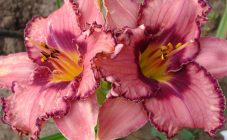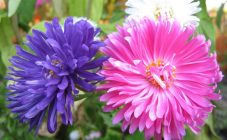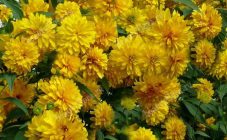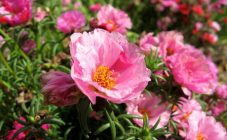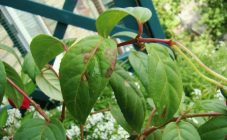Content:
The daylily got its second name - the day lily - thanks to its beauty, which lasts only 1 day. The plant has many varieties, and not only hybrid, but also wild specimens look gorgeous. The daylily flower is very unpretentious to care for, but not new varieties. For several years now, it has not gone out of fashion, because breeders from the USA and Australia have presented new varieties. They are distinguished by their extraordinary beauty, however, these plants are already more demanding to take care of themselves. The article provides information on what a perennial daylily is, what care it needs, and what kind of soil it likes.
Daylily description
Daylily flowers have thick roots that resemble cords that provide moisture even on the driest days. Broadly linear, two-rowed leaves can be straight or slightly curved. The flowers of the day are 6-separate, large, usually in the form of a funnel of yellow, orange or red with brown tint.
Daylily is a very beautiful flower. There are several buds in the inflorescence, however, no more than 3 can bloom at the same time. On one bush of the krasnodka there can be 1 or several peduncles. Their length reaches 30-90 cm, but it depends on the species, although there are also more than 1 m. The pyramid with seeds is the fruit of the day.
How much a daylily plant blooms depends on the care and composition of the soil. Novice gardeners do not know whether the daylily is a perennial or not. Botanists have long included it in the list of undemanding perennials.
Types and varieties
Among the variety of flower species presented, each gardener will easily pick up his favorite variety for himself.
Wild species
Among gardeners, all types of beauty days that were created by nature are very popular. All this thanks to its charming appearance, durability and ease of care. And their merits do not end there. Wild species of daylily tolerate adverse weather conditions well: they are not afraid of either drought or high humidity. Also, flowers have resistance to harmful insects and rodents and to various diseases. The most common varieties of wild daylily are: Du Maurier, Middendorf, red, yellow and lemon yellow.
Features of some wild hot days:
- Daylily orange. This plant began to be cultivated in 1890. The orange daylily blooms in July large asymmetric red flowers with a dark red tint, which reach up to 12 cm in width.Rigid leaves are 30 cm wide, and the height of the bush with flowers reaches 1 m. Moreover, they have a sharply curved shape and a dark bright green color. The orange daylily has no smell.
- Daylily lemon yellow... This beautiful day grows in nature only in China. Its main difference from others is that it blooms at night, and also looks very much like a lily. The tallest peduncles branch in the upper part of the plant at a distance of 80-90 cm from the ground. The flowers are 12 cm wide and 14 cm long.The daylily blooms from the second decade of July to the end of August for about 40 nights, while the flowers emit a wonderful aroma.
- Daylily Dumortier grows in wildlife in the Far East, Japan, Korea and China. This type of daylily began to be cultivated in 1830.The plant grows up to 70 cm in height with dark green leaves 2 cm wide and yellow-orange flowers with a diameter of 4.5 cm.The leaves and peduncles are at the same height, and the inflorescence consists of 2 -4 flowers. Breeders are very fond of using this type of daylily as a basis for breeding new varieties.
Daylily garden (hybrid)
This name means all cultivars, of which more than 60 thousand have already been bred. A huge number of them have been created by breeders from the USA and Australia. All types of daylily differ in the shape and color of the flower, the period and time of flowering, the height of the foliage, as well as the presence of a peculiar smell or its absence. Hybrid crops have a wide variety of shades.
Beauty day care
The daylily does not require any additional maintenance, you just need to water it, sometimes loosen the soil and remove weeds.
Watering
During the period of active growth and flowering, the beautiful day should be watered regularly. If he does not have enough water, his buds may fall off, and the leaves may fade. Therefore, in dry periods, the plant is watered abundantly so that the soil is moistened to the depth of all roots - about 20-30 cm. If there is enough precipitation, then watering can be reduced.
Top dressing
Having planted a daylily, you can not worry about feeding it for a whole year. He needs additional nutrients only a year after planting. The most suitable will be complex mineral fertilizers. So that the plant does not start strong foliage growth to the detriment of flowers, the proportion of nitrogen should be limited. In the spring, it is enough to fertilize the soil 1 time, and during the summer - 2 times. At the beginning of autumn, you need to prepare the plant for winter, for which it is recommended to feed it with potassium and phosphorus.
Shelter on winter
Daylily flowers are frost-resistant, and this is their plus. However, in case of frost without snow, the plant may suffer. To insulate it, you need to cover it with needles, spruce branches. They need to be removed as soon as the snow begins to melt so that the root collar does not overheat and rot.
Reproduction of daylilies
Not many people know how to grow a homemade daylily from seeds, although this is not the best way. A more popular breeding method for the kossodnevka is vegetative, since with seed there is a loss of varietal characteristics. Therefore, the seeds of the perennial daylily are grown only by those that were purchased from bona fide producers.
Landing in open ground
Before planting daylily seedlings, they must be carefully examined and any dry, rotten or damaged roots removed, and the pruning sites must be treated with a fungicide. Leaves can be shortened by cutting them off at a distance of 10-15 cm from the base.
Soil for perennial daylilies
What kind of soil do daylilies like? They prefer light and loose with slightly acidic or neutral acidity, that is, the usual garden soil.
Step-by-step planting instructions:
- The bed for the daylily needs to be dug onto the bayonet of the shovel. Add humus, compost and sand to loam and clay soil.
- The holes must be made corresponding to the size of the roots.
- For a soil poor in nutrients, a special enrichment solution must be prepared. To do this, add 30 g of phosphorus and potassium to 1 bucket of humus with peat.
- The soil is then poured into the landing hole with a slide, on which the root system is installed so that the roots do not bend anywhere.
- Then they are covered with earth so that the neck is deepened by 2 cm. The soil should be slightly crushed. A 70 cm gap must be maintained between the plants.
- To keep moisture in the soil longer, mulching is recommended. You can use anything you want (straw, pine needles, bark).
Division with a small number of flowers
The daylily blooms best for the first 5-7 years, then the greenery grows, and the inflorescences are smaller, so peduncles rarely appear. To deal with this problem, the mother hive simply needs to be split up. Since the daylily is an unpretentious plant, it easily tolerates division and transplantation procedures.
- Before you start dividing the bush, you need to carefully dig it from all sides so as not to deform.
- Further, the process of division itself takes place, that is, the bush must be divided into parts so that each green shoot has a root.
- Delenki are then planted in open ground, as described above.
Harmful insects and diseases
Despite the high resistance of the daylily to various diseases and harmful insects, it may still have some problems.
- Thrips... These pests enter the plant from the soil at a temperature of 10 ° C. Their food is the sap of the plant, which they suck from flowers, leaves and stems. The flowers begin to deform in the bud. For prevention, you need to spray the soil near the daylily with insecticides in the spring and autumn. You also need to ensure that there are no plant residues on the ground with these pests.
- Lily mosquito. The insect lays its larvae in buds, which, as it grows, suck out the juice from the day, after which the flowers begin to deform. You can get rid of the lily mosquito simply by removing all affected parts of the plant.
- Water voles. The number of these pests increases sharply once every 4 years, and during this period they feed on the bulbs of some flowers, as well as the roots of daylilies and apple trees. Of course, it is impossible to destroy all voles, but their infestation can be fought with the help of special poisons, which can be purchased at a gardening store.
- Root rot... This attack usually manifests itself in the spring. The diseased bush begins to turn yellow, young shoots and leaves stop growing, and it is also very easy to pull it out of the ground. For treatment, you need to dig out the affected daylily and remove all rotten parts, then treat with a solution of potassium permanganate and dig in again.
- Rust... Only daylilies are susceptible to this disease. To prevent this ailment, you need to treat it with a fungicide.
- Fusarium... The foliage of the plant quickly turns yellow and withers, the roots look rotten, and the daylily itself is stunted. Fusarium is a fungus from which the plant can be cured at the initial stage of fungicide disease. If the bush is severely affected, then it is better to remove it. The soil where it was cultivated, as well as nearby plants, should be treated with foundationol.
Lily and daylily: what is the difference and how to distinguish them
Many of the budding gardeners assume that the lily and krasodnev are one and the same plant. But, despite some similarities between them, they are completely different cultures. So, how does a lily differ from a daylily:
- root system;
- inflorescences;
- foliage.
Lily and daylily belong to the same class of perennial monocotyledonous plants. But they belong to different families: the daylily - to the Xantoreevs, and the lily - to the Liliaceae.
The daylily is such an unpretentious plant in growing that it blooms gorgeous in the garden even without unnecessary worries and hassles. Moreover, you can decorate your flower bed with both natural and hybrid plant species. Both those and others are striking in their beauty and luxury.
